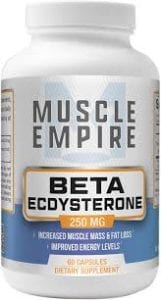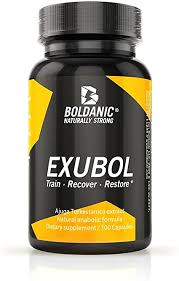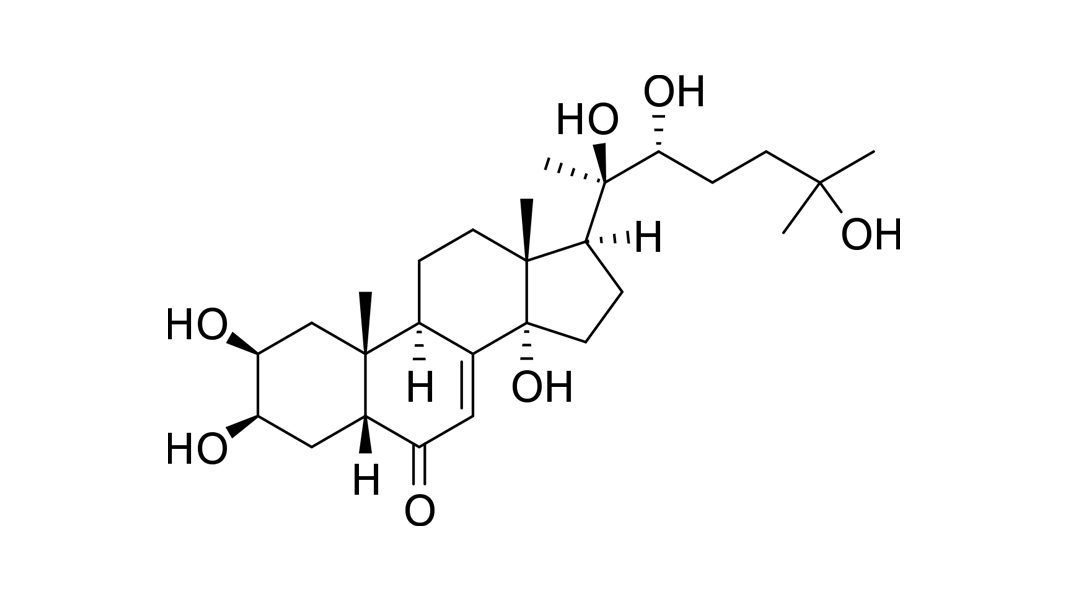The History & Background of Beta-Ecdysterone
Beta-ecdysterone, also called ecdysterone or 20-hydroxyecdysone, is a naturally occurring steroid found in plants and insects. It is used widely by bodybuilders with hopes to build muscle or lean body tissue. It is also often marketed as a natural alternative to steroids with claims that it’s a powerful growth promoter with no negative hormonal consequences.
Use in Supplements
Animal studies demonstrated that Beta-Ecdysterone performs critical functions in protein biosynthesis. These anabolic properties recommend that they may have bodybuilders’ impact on metabolism. Beta-Ecdysterone is mainly utilized in bodybuilding and health supplements to aid in increasing muscle mass, boosting muscle definition, diminishing body fat, and improving performance. Research studies in the past indicated that Beta-Ecdysterone might offer other health advantages, including protecting the heart, suppressing degenerative diseases, enhancing glucose metabolism, supporting faster-wound healing, improving skin condition, and avoiding oxidative damage to epithelial cells.
Common Dosing
Even though it is found naturally in over 150 plants, the most typical form of Beta-Ecdysterone is in capsule form. Studies suggest that supplementation with Beta-Ecdysterone is safe at 5 milligrams per kilogram of body weight. Nevertheless, the majority of nutritional companies utilize lower dosages approximately between 50 and 90 mg in total. So a lot of athletes say they need a more massive dosage compared to what is included in the nutritional formula to see the benefits related to muscle growth.
Products Containing Beta-Ecdysterone

Price: $28.49
Contains: 60 capsules
AVG Review: 0 stars on Amazon
Beta-Ecdysterone (20-hydroxyecdysone) is a compound found in some plants and insects similar in structure to a compound found in humans associated with muscle growth, strength, and recovery.
 #2: Exubol
#2: Exubol
Price: $39.99
Contains: 100 capsules
AVG Review: 3.3 stars on Amazon
Read More […]Exubol is a great source of Ecdysteroids: Turkesterone. Ecdysterone, minor ecdysteroids, and iridoids.
 #3: Ecdysterone Booster
#3: Ecdysterone Booster
Price: $33.16
Contains: 90 capsules
AVG Review: 4.5 stars on Amazon
Read More […]MST Nutrition🇩🇪’s Ecdysterone Booster is designed specifically for athletes looking to increase muscle mass while reducing body fat.
Potential Side Effects of Beta-Ecdysterone
There has been no research published in the United States concerning the effect of Beta-Ecdysterone on athletes’ performance. There are no adverse side effects, the absence of hormonal interaction, and a low level of toxicity. Not enough research has been found to determine the effectiveness of this anabolic agent in people.
FAQs
1. What are the functions of Beta-Ecdysterone?
In arthropods, Beta-Ecdysterone controls metamorphosis and molting. It is perceived that plants generate Beta-Ecdysterone as a defense against insects that eat plants as they can result in premature molting and other metabolic damage.
2. What are the sources of Beta-Ecdysterone?
While ecdysterone is naturally produced in insects, crabs, and other arthropods, the type most commonly consumed by humans is extracted from plants and taken in capsule form as a natural dietary supplement. Examples of plants that have beta-ecdysterone are Suma, Maral Root, Leuzea, Ox Knee, Giloy, Serratula, and Cyanotis Vaga.
Studies
Several studies have been performed to determine the benefits of Beta-Ecdysterone. Among those cited is used to support bodybuilding supplements. It was found that Beta-Ecdysterone performs a significant role in increasing muscle mass while diminishing the fat content in human bodies. Other advantages have emerged following the research regarding the use of Beta-Ecdysterone It has also been suggested that Beta-Ecdysterone is good and improves the skin condition in women who are in the post-menopausal stage.
Final Review of Beta-Ecdysterone
Beta-Ecdysterone is a class of compounds that has the same properties as other anabolic drugs but has some biological impacts in mammals because of the absence of or not enough androgenicity. The safety profiles of Beta-Ecdysterone are more significant compared to anabolic-androgenic steroids.
References
http://www.mensfitness.com/nutrition/supplements/beta-ecdysterone
Cahlíková, Lucie; Macáková, Kateřina. “Ecdysterone and its activity on some degenerative diseases”; Natural Product Communications; May 2011. http://www.ncbi.nlm.nih.gov/pubmed/21615037
Ehrhardt, Caroline; Wessels, Johannes T.; et al. “The Effects of 20-Hydroxyecdysone and 17β-Estradiol on the Skin of Ovariectomized Rats”; Menopause; March 2011. http://www.ncbi.nlm.nih.gov/pubmed/21030883

